Bodywork masking nets

Bodywork paint masking nets
-
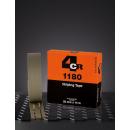 1180.2514Special edging tape25mm x 14m 8 strips
1180.2514Special edging tape25mm x 14m 8 strips -
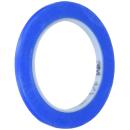 6404Fine lineVinyl 471 Blue adhesive tape - 3mm
6404Fine lineVinyl 471 Blue adhesive tape - 3mm -
 6405Fine lineVinyl 471 Blue adhesive tape - 6mm
6405Fine lineVinyl 471 Blue adhesive tape - 6mm -
 6408Fine lineVinyl 471 Blue adhesive tape - 12mm
6408Fine lineVinyl 471 Blue adhesive tape - 12mm -
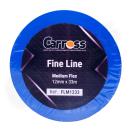 FLM1233Fine line Medium flex12mm x 33m - blue
FLM1233Fine line Medium flex12mm x 33m - blue -
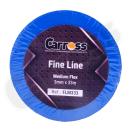 FLM333Fine line Medium flex3mm x 33m - blue
FLM333Fine line Medium flex3mm x 33m - blue -
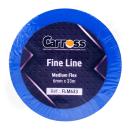 FLM633Fine line Medium flex6mm x 33m - blue
FLM633Fine line Medium flex6mm x 33m - blue -
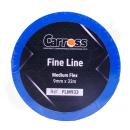 FLM933Fine line Medium flex9mm x 33m - blue
FLM933Fine line Medium flex9mm x 33m - blue -
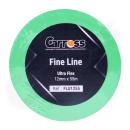 FLU1255Fine Line Ultra Flex12mm x 55m - green
FLU1255Fine Line Ultra Flex12mm x 55m - green -
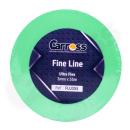 FLU355Fine Line Ultra Flex3mm x 55m - green
FLU355Fine Line Ultra Flex3mm x 55m - green -
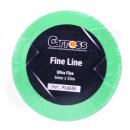 FLU655Fine Line Ultra Flex6mm x 55m - green
FLU655Fine Line Ultra Flex6mm x 55m - green -
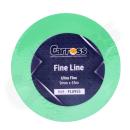 FLU955Fine Line Ultra Flex9mm x 55m - green
FLU955Fine Line Ultra Flex9mm x 55m - green
︾
Bodywork masking netting: an invaluable tool for car paintwork :
Bodywork masking netting is an indispensable accessory in the field of car bodywork, offering an effective solution for demarcating areas to be painted while guaranteeing clean, precise lines. Here's an overview of these masking nets and their essential role in paintwork:
1. Definition and composition :
Bodywork masking tape is a flexible strip, usually made from materials such as paper, plastic or adhesive tape, designed to create precise contours on a vehicle's bodywork during paint jobs.
2. Main uses :
Masking nets are used to outline specific areas of the bodywork, clearly defining where paint should and should not be applied. They are particularly useful for creating clear dividing lines between different colours or areas of paint.
3. Flexibility and adaptability :
Thanks to their flexibility, Masking Nets can be adjusted to suit complex body contours, including curved surfaces, corners and specific details. This ensures maximum precision when applying paint.
4. Types of masking tape :
A variety of masking nets are available on the market, including adhesive nets, static nets, and nets of different widths and lengths. Some models are also equipped with special adhesives to ensure good adhesion without leaving residues on removal.
5. Splash protection :
Masking nets act as a protective barrier against paint splashes. They minimise the risk of unwanted splashes on areas that should not be painted, ensuring a clean and professional finish.
6. Ease of application:
Masking nets are relatively easy to apply. They can be cut to length and precisely positioned on the bodywork. Some models include guides to create curves or straight lines with ease.
7. Easy removal:
After the paint has been applied, masking fillets can be removed with ease, leaving behind clean lines and a clean surface. Some models are designed to minimise the risk of tearing or sticky residue.
8. Complementary use with other materials :
Masking tape is often used in conjunction with other masking materials such as adhesive tape or protective film, providing an overall solution for preparing the bodywork prior to painting.
In conclusion, bodywork masking tape is a versatile and valuable tool for bodywork professionals. Their ability to create precise contours and protect specific areas makes a significant contribution to high-quality paintwork and to preserving the aesthetic appeal of vehicles.
Steps for using bodywork masking netting :
Using bodywork masking netting is a relatively simple process but crucial to achieving accurate and professional paint results. Here's a step-by-step procedure on how to use bodywork masking net:
Materials required :
Masking tape
Adhesive tape (if necessary)
Newspaper or protective film
Paint and other painting supplies
Steps for applying masking tape :
Preparing the surface :
Make sure the surface to be painted is clean, dry and free of any dirt, wax or grease. If necessary, clean the surface with a suitable Degreaser and allow it to dry completely.
Choosing the masking mesh :
Select the appropriate masking mesh in terms of width and length depending on the area to be protected and the contours to be followed.
Cutting the masking net :
Cut the masking net to the required length using scissors. If the shape of the area to be protected is complex, it may be useful to cut the netting into smaller segments for easier fitting.
Applying the mesh :
Carefully place the Masking net along the area you wish to protect. Make sure the mesh adheres well to the surface and follows the contours precisely. For curved areas, fold or stretch the mesh as necessary to fit.
Fixing with adhesive tape (if necessary):
If the Masking tape does not have an integrated adhesive or if additional fixing is required, use adhesive tape to further secure the tape. Take care not to damage the surface to be protected.
Extra protection:
For extra protection, use newspaper, cling film or other materials to give extra coverage to surrounding areas and prevent unwanted paint splashes.
Check adhesion:
Review the placement of the masking mesh and make sure it is securely fastened. Proper adhesion is essential to prevent paint from seeping under the mesh.
Paint application:
Apply the paint in accordance with the manufacturer's instructions. Be sure to observe the recommended drying times between coats if more than one coat is required.
Removing the masking net :
Wait for the paint to dry sufficiently according to the manufacturer's recommendations. Carefully remove the masking net by pulling in a direction parallel to the painted surface. Be sure to remove the netting before the paint is completely dry to avoid tearing the line.
Finishing:
Once the netting has been removed, examine the quality of the masking line. If necessary, make minor touch-ups with a fine brush or an applicator to perfect the contours.
By following these steps, you should be able to use bodywork masking netting effectively to achieve accurate, neat paint results.
Body masking netting: answers to common user questions
Body masking netting is an essential tool for achieving precise lines in car paintwork. Here are some answers to common questions users may have about using these masking nets:
1. Why should I use Masking tape instead of standard tape?
Masking tape offers superior flexibility and adaptability, particularly on curved surfaces. They are designed to create precise contours and minimise the risk of smearing.
2. How do I choose the right size of masking mesh?
Choose a masking net whose width corresponds to the area you want to protect. You can choose different widths depending on the complexity of the contours.
3. Are masking nets suitable for curved surfaces?
Yes, Masking Netting is designed to fit the contours of the bodywork, including curved surfaces. Be sure to adjust them carefully for optimum adhesion.
4. How can I prevent paint from seeping under the masking net?
Make sure the masking tape is properly fixed and adheres firmly to the surface. Also avoid applying too thick a coat of paint, which could cause splattering.
5. Can masking tape be reused?
Some masking nets can be reused, but this depends on the type of material used. We recommend using them as disposable consumables to ensure optimum performance.
6. Can masking tape be used with any type of paint?
In general, Masking Nets are compatible with various types of paint. However, it is advisable to check compatibility with the specific type of paint you are using.
7. Should the masking net be removed immediately after painting?
It is advisable to remove the Masking mesh before the paint is completely dry to avoid tearing the line. However, be sure to follow the paint manufacturer's recommendations.
8. Can Masking Netting be used on more complex paint projects?
Yes, Masking Nets are suitable for complex paint projects, including those involving minute detail. They offer great precision in defining contours.
9. How can I prevent masking tape from leaving a sticky residue?
Use quality masking tape that is designed not to leave a sticky residue. If necessary, gently remove the mesh and clean the surface with a suitable product.
10. Can masking tape be used on surfaces other than car bodywork?
Yes, Masking Nets can be used on other surfaces, but be sure to check their compatibility with the material and type of Paint being used.
By using Masking Netting correctly and understanding the nuances of its use, bodywork professionals can ensure clean, accurate paint results to the highest standards.